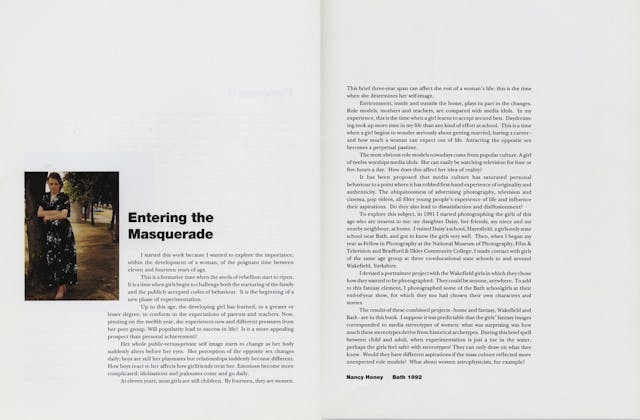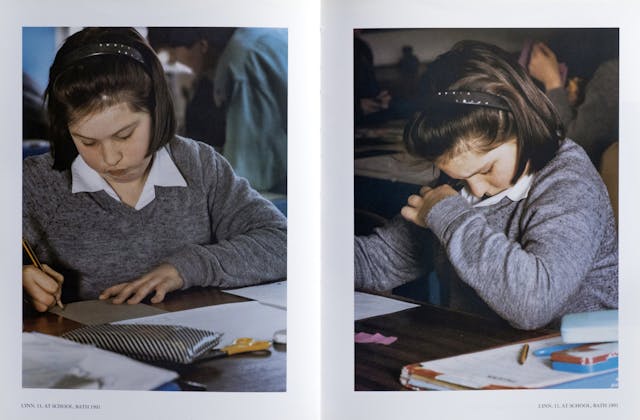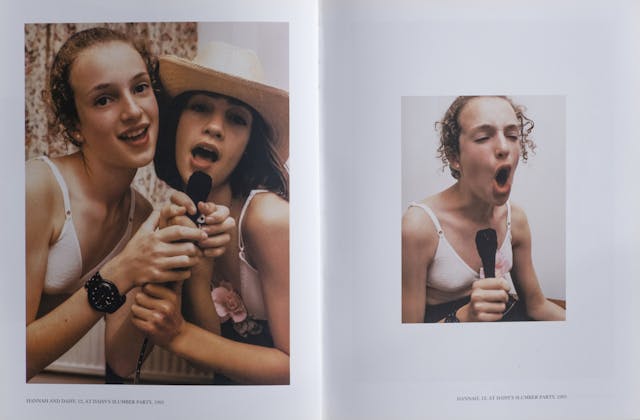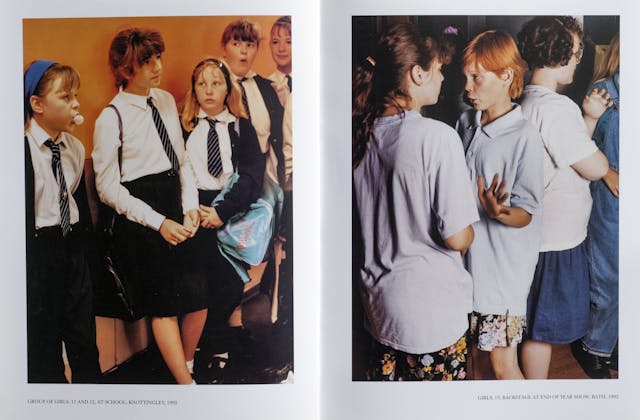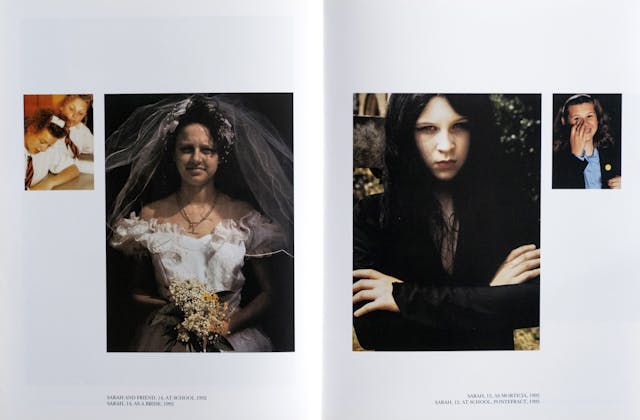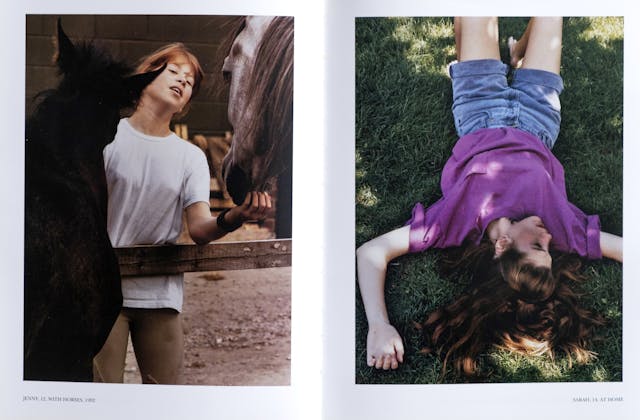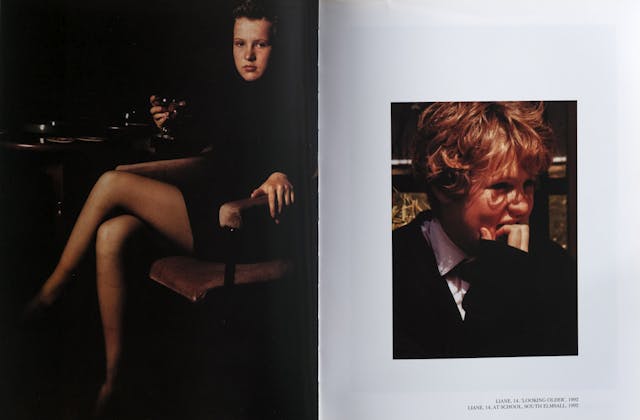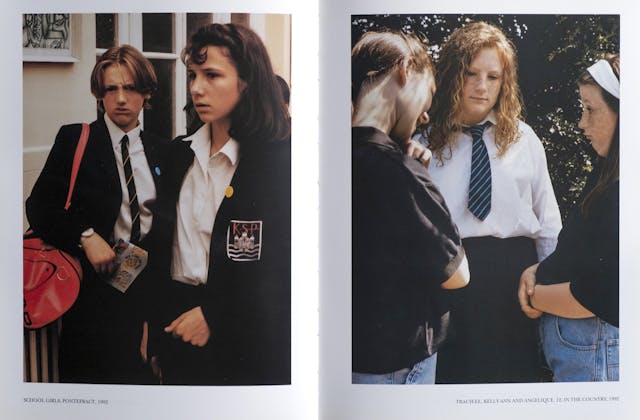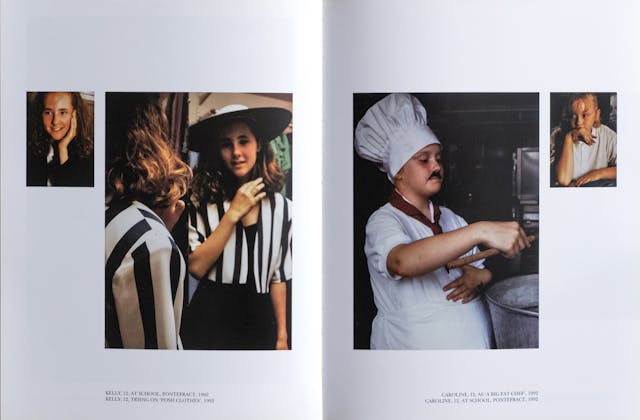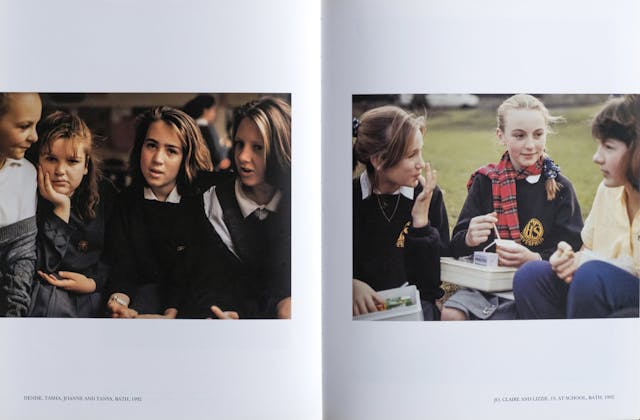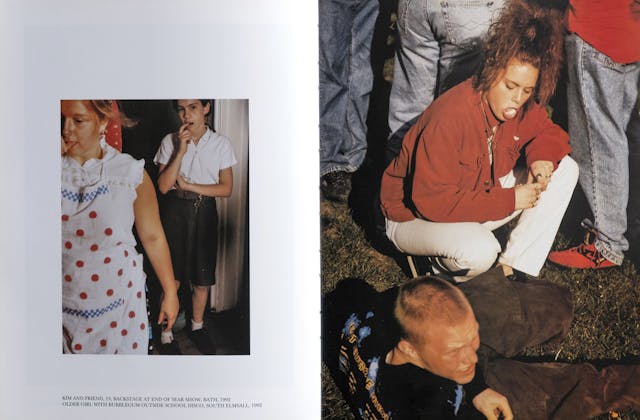Books
Entering The Masquerade
This is a book and exhibition project that explores the importance, within the development of a woman, of the poignant time between 11 and 14 years of age. It centres on girls at home, school and their fantasies.
It is a documentary project, working with girls in 4 UK schools in Bath and Yorkshire.
- Publisher:
- National Musuem of Photography, Film & TV
- Published:
- 1992
Sample Book Pages
I started this work because I wanted to explore the importance, within the development of a woman, of the poignant time between eleven and fourteen years of age.
This is a formative time when the seeds of rebellion start to ripen. It is a time when girls begin to challenge both the nurturing of the family and the publicly accepted codes of behaviour. It is the beginning of a new phase of experimentation.
Up to this age, the developing girl has carted, to a greater or lesser degree, to conform to the expectations of parents and teachers. Now, pivoting on the twelfth year, she experiences new and different pressures from her peer group. Will popularity lead to success in life? Is it a more appealing prospect than personal achievement?
Her whole public-versus-private self image starts to change as her body suddenly alters before her eyes. Her perception of the opposite sex changes daily; boys are still her playmates but relationships suddenly become different. How boys react to her affects how girlfriends treat her. Emotions become more complicated; idolisations and jealousies come and go daily.
At eleven years, most girls are still children. By fourteen, they are women.
This brief three-year span can affect the rest of a woman’s life: this is the time when she determines her self-image.
Environment, inside and outside the home, plays its part in the changes. Role models, mothers and teachers, are compared with media idols. In my experience, this is the time when a girl learns to accept second best. Daydream-ing took up more time in my life than any kind of effort at school. This is a time when a girl begins to wonder seriously about getting married, having a career - and how much a woman can expect out of life. Attracting the opposite sex becomes a perpetual pastime.
The most obvious role models nowadays come from popular culture. A girl of twelve worships media idols. She can easily be watching television for four or five hours a day. How does this affect her idea of reality?
It has been proposed that media culture has saturated personal behaviour to a point where it has robbed first-hand experience of originality and authenticity. The ubiquitousness of advertising photography, television and cinema, pop videos, all filter young people’s experience of life and influence their aspirations. Do they also lead to dissatisfaction and disillusionment?
To explore this subject, in 1991 I started photographing the girls of this age who are nearest to me: my daughter Daisy, her friends, my niece and my nearby neighbour, at home. I visited Daisy’s school, Hayesfield, a girls-only state school near Bath, and got to know the girls very well. Then, when I began my year as Fellow in Photography at the National Museum of Photography, Film & Television and Bradford & Ilkley Community College, I made contact with girls of the same age group at three co-educational state schools in and around Wakefield, Yorkshire.
I devised a portraiture project with the Wakefield girls in which they chose how they wanted to be photographed. They could be anyone, anywhere. To add to this fantasy element, I photographed some of the Bath schoolgirls at their end-of-year show, for which they too had chosen their own characters and stories.
The results of these combined projects - home and fantasy, Wakefield and Bath - are in this book. I suppose it was predictable that the girls’ fantasy images corresponded to media stereotypes of women: what was surprising was how much these stereotypes derive from historical archetypes. During this brief spell between child and adult, when experimentation is just a toe in the water, perhaps the girls feel safer with stereotypes? They can only draw on what they know. Would they have different aspirations if the mass culture reflected more unexpected role models? What about women astrophysicists, for example?
